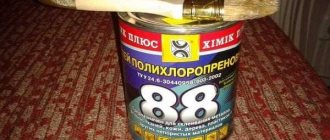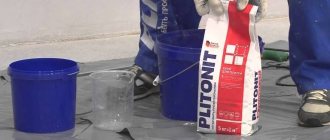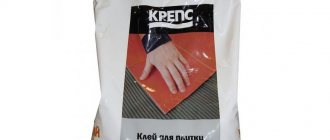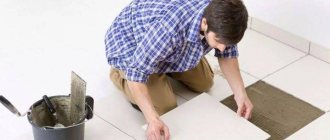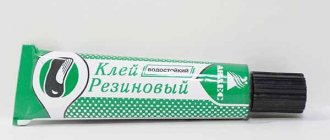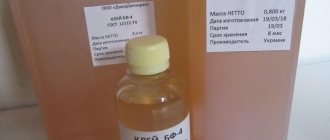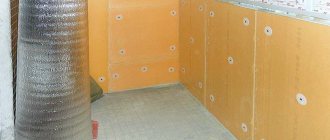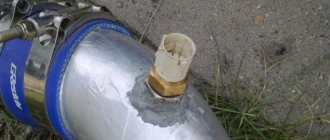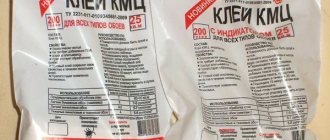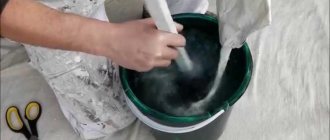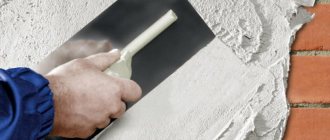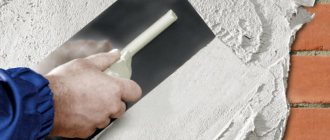Genuine vs faux leather
Leather is a high quality natural material, very durable and wear-resistant. Subject to operating conditions and good care, leather will last for many years without losing its original appearance and structure. During the dressing process, different thicknesses and textures are achieved, the skin is dyed and tinted in different colors.
Natural material is used for sewing clothes, shoes, hats and accessories, for upholstering furniture and making decorative items. Leather products are comfortable to wear and durable. The upholstery is practical and comfortable, looks great in the office and at home.
Advice! Natural leather, especially soft and thin, is easily damaged; an artificial alternative is better able to withstand mechanical stress.
Artificial leather has adopted all the external characteristics of its natural counterpart. However, the performance characteristics of leatherette are significantly lower. Fabrics that imitate leather are much cheaper and easier to care for, taking on any shade and texture. The strength and durability of artificial leather and suede is practically not inferior to natural material, but synthetics are less resistant to negative environmental factors: humidity, high and low temperatures, and changes in these indicators. The latest high-quality imitation leather products include eco-leather, a two-layer material that is resistant to abrasion and tearing.
Characteristics
Nairit glue is a one-component one, made on the basis of chloroprene rubber (nairit), which is a synthetic translucent resin of a light yellow hue. The product is characterized by excellent adhesive properties, resistant to abrasion and external factors.
The composition has excellent water-repellent properties, which allows it to be used for processing seams. Provides reliable sealing of joints, is safe, does not contain components toxic to humans, and therefore is approved for repairing children's shoes. Disadvantage - the composition is an expensive product.
General requirements
For gluing natural and artificial leather, as well as suede, you need a composition that primarily has the following characteristics:
- The substance should not leave visible marks on the surface - this is important to preserve the appearance of the product being repaired.
- Only elastic glue will do because the leather stretches.
- To repair leather items, you need a compound with sufficient adhesion.
- It is desirable that there is no strong unpleasant odor.
- The shorter the setting time, the more convenient it will be to work with small parts; if you need to glue a large surface, then it is better if the composition remains sticky longer.
- The glue must be safe for health.
When to use glue for gluing material
The mixture is often used in handicrafts, industrial or textile production. This is an indispensable thing when you need to glue plastic fittings, decorative elements, or connect pieces of fabric together. This is a partial list of where textile adhesive can be useful for gluing.
The use of this material is justified in the following cases:
- For product restoration. For example, when it is necessary to hide a fabric defect with a plastic element.
- To create a composition using the decoupage technique, when several small pieces of different types of textiles are used to create a whole picture.
- For making and decorating accessories. For example, elastic bands or headbands.
- For processing the edges of clothes - the hem of skirts, the hem of coats, the hem of trousers, and so on.
- For creating designer patches.
- For gluing plastic fittings. For example, beads, rhinestones, seed beads or any other elements.
- For trimming with fringe and lace.
Main characteristics of leather glue
An incorrectly selected adhesive composition will not provide adequate joint strength and may damage the material. Skin glue must meet certain standards and have characteristic features and properties that you need to learn more about.
There are a number of properties that any adhesive composition for artificial or natural material must have.
These include:
- Resistant to high and low temperatures.
- Optimal viscosity indicators.
- Resistance to long-term exposure to chemicals, water, fats.
- Easy to apply, thick consistency.
- Long working time in a sticky state.
- Should not damage the material after application.
- No allergens in the composition.
- The composition must be free of caustic substances that are hazardous to vision and breathing.
- No strong odor.
- Weather resistance.
- Seam flexibility and strength.
- The seam should not have color or stand out.
It is better to choose elastic, waterproof leather glue from a well-known manufacturer. All these qualities must be present in the best examples.
And now a little about using this tool
Application area
The main area of use of such a product is shoe repair, and the adhesive composition is capable of firmly bonding leather and leather, artificial materials, shoe fabric and nubuck. You will also be able to connect the fabric base to the inner surface of the shoe, glue heels onto the heels, and also attach outsoles. It is also possible to glue a zipper instead of sewing it in. In addition, you can use the product to fasten each part made of rubber, wood, porcelain, ceramics, metal, glass, felt, plastic. Using this product, you can glue decorative items during construction on the base - moddings, tiles, plastic corners, and the best quality product is produced in cans, and this is the glue that will connect the parts most reliably. Tube adhesives are used for those products that are subject to less friction and pressure (for example, shoe tops).
Advantages and disadvantages
Before considering the instructions for using Nairite glue, you should consider all the advantages and disadvantages of the product in order to know about the advantages of such a universal and high-quality product. The composition contains only low-toxic substances, and glued products can be used without any fear.
Other advantages are:
- High thermal stability.
- Flexibility, elasticity, plasticity even when the temperature level decreases.
- Reliability of connections due to deep penetration into the material.
- Resistant to salts, acids and water.
- Possibility of operation at low temperatures.
- Preservation of properties during temperature changes.
By the way, the material is very convenient to use, and it is also easy to use. The downside, and at the same time noticeable, is the drying time - it is slightly longer than many similar products. But this makes it possible to calmly place the glued elements and, if necessary, have time to correct mistakes. The adhesive composition does not need to be heated before gluing and application, because a cold gluing method can be used. After drying, even the thin leather itself will not be deformed, and therefore this glue can be used even for very expensive shoes.
Popular brands of adhesives
There are several popular brands of products that are on sale - these are Eva, Kenda Farben and others. Below we decided to describe the most popular adhesive compositions.
"Nairit-1"
An adhesive composition such as “Nairit-1” or glue 88-P1 is a very durable, high-quality composition. After drying, a thin layer will create a flexible seam that will not burst or crumble even in winter. Nairit-1 on shoes will perfectly retain its performance properties for a long period of time. Ideally, you should use a cold gluing method for such material. It will be possible to use the shoes only after a day (and with the hot gluing method after 3 hours), but the reliability of the joint will be many times higher.
S A R -30E
This adhesive composition for shoes is made in Italy, and it is the best nairite type glue in the opinion of most craftsmen. The product is perfect for the most expensive shoes made of eco-leather, genuine leather, nubuck, and with its help you can perfectly glue rubber boots, insoles, and also cover heels. With the hot method, you can use shoes after 3 hours, and with the cold method after 24 hours.
"Rapid 5"
This product is made in Russia, which is why its cost is lower than that of imported analogues. It contains a special rubber mixture, and the material itself is widely used for repairing various shoes, and this glue is no less popular for gluing metal, plastic and rubber in everyday life.
"Anles"
This material is also produced in Russia, and it can be used to glue parts, soles of synthetic or leather shoes, as well as pairs of fabric. It is best to use the hot gluing method with such Nairite glue, but then you can safely use the products at temperatures from -40 to +70 degrees.
General rules of application
Before starting work, you must carefully study the instructions for use of the selected glue. To ensure safety when working with toxic compounds, it is better to perform activities outdoors. It is advisable to protect your hands with gloves.
Preparation
Before work, you need to prepare the workplace: protect the surface of the table and, if necessary, the floor. It is easier to prevent the ingress of glue than to later remove accidental traces from the decorative finishing of the room. The item to be repaired is cleaned and dried, the surface is degreased.
To work with some compounds, separate preparation is required, or there is no need for it at all - information about this is indicated in the instructions for the glue.
Gluing
In order to stick one leather surface to another, you need to thoroughly coat it or apply the composition to both - it depends on the chosen product. It is better to remove the excess immediately. After eliminating the defect, the item is left to dry for a while, usually a day.
Application of glue
The glue is used both by professional factories and studios, and by private shoe repair kiosks. Its price is affordable for enterprises with any capital. The return on costs occurs instantly, which is why it has become so widespread. The ease of working with the substance also played a role. To repair shoes with its help, you do not need to study to become a professional shoemaker. It is enough to follow the manufacturer's recommendations, and no problems will arise.
Since the substance is used to make products that are directly used by humans, it does not contain toxic and harmful elements. Nairite shoe adhesive is made from polychloroprene rubber resin, synthetic additives, organic non-volatile solvents and thermal vulcanizers. There is nothing superfluous among the components; each element plays a clearly assigned function. And in close interaction they provide the glue with the properties necessary for its work.
We recommend: BF-6 glue - characteristics and application
Since manufactured and repaired products will be in direct contact with the environment, the adhesive has water-repellent properties. It not only completely seals the treated area, but also literally pushes water out, preventing it from being absorbed. This allows you to keep your feet dry in any weather. Therefore, after sewing shoes, many shoemakers additionally treat the seam with glue to protect the product from moisture. Some even use the substance to repair rubber boats, diving suits and car inner tubes.
The mixture is very easy to work with. There are two main ways to use it: hot and cold. The choice of a specific method depends only on the repair conditions and the desire of the master. In terms of reliability, they do not differ from each other by a significant amount so that one can say that one method is obviously better than the other. Using cold is easier, as it does not require the use of additional tools. But if you want, getting them is not a problem. A regular liquid fuel burner will also work.
Celluloid composition
Many consumers are interested in which leather glue has high adhesion. In this case, it is worth mentioning the celluloid composition. It is used in working with different materials. In particular, this glue is used for wood and leather, plastic, textiles and other things. The composition dries quickly enough and is resistant to moisture. You can make it yourself. To do this you need to take an old film. It should be washed to remove the emulsion in hot water and then cut into small pieces. They should be placed in a glass container and filled with acetone or pear essence (amyl acetate). The proportions are as follows: 1 part celluloid to 2-3 parts solvent. The container needs to be shaken periodically. After the film has completely dissolved, the glue is ready for use.
Can't be sealed
Many craftswomen and beginners in this business wonder why it is necessary to use glue, and whether it would be easier to sew up the product.
Let us highlight several factors that you need to pay attention to before choosing a method of joining materials:
- Consider the thickness of the skin. If it is large, it is advisable to use an adhesive composition.
- If you need to maintain an attractive appearance, flashing the damaged area will not work.
- Lack of sewing skills, and leather requires special experience.
Glue can be used to reach hard-to-reach places, which is quite difficult with a sewing machine and even more so with a needle and thread by hand. This involves additional work in the form of ripping out the lining and carefully stitching it together “as it was.”
Small damage can be easily repaired. Serious tears are usually stitched up, or glued and stitched. But you will need special needles and strong threads.
How to glue natural and artificial leather
When repairing leather products, a patch is usually used, which is fixed at the site of damage from the outside or inside. For reliable and long-term fastening of the patch, the glue must be thick and viscous, preferably transparent, set quickly and have an elastic structure after drying.
Types of glue suitable for fastening leather and leatherette, fixing additional parts:
- "Nairit." It has a light shade and thick consistency, is easy to work with, and dries quickly. Nairite compounds are often used in the repair of shoes and various leather goods.
- PVA for leather. It applies well, dries quickly, leaves behind a film that is resistant to temperature and mechanical influences, moisture and sunlight for a long time.
- Dismokol glue. The consistency is viscous and elastic, used for durable gluing of leather and leatherette to each other. Convenient for joining cuts and restoring leather clothing and accessories.
- Universal and fast “Moment”. It is used for small volumes of work and requires fast and precise movements, as it instantly adheres materials. It is better to remove excess substance immediately, since in a dried form, traces of second glue are difficult to remove.
- Silicone glue. This composition is suitable for connecting materials of different structure and quality to each other, including leather and eco-leather. The peculiarity of using silicone glue on the skin is that for high-quality hardening, the skin must first be stretched and securely fixed until the adhesive seam dries completely.
Dismokol glue
When working with genuine leather, suede and faux leather, dressmakers often use adhesive tapes for leather or thick fabric. Especially when a leather product needs to be folded or a zipper needs to be replaced.
Main characteristics and areas of application
The main component of Nairit glue is chloroprene rubber (Nairit). This synthetic material is an elastic light yellow translucent resin.
Nairit is widely used in the production of rubber products. The material has excellent adhesion (the ability to stick together), good resistance to abrasion and weathering.
Due to its characteristics, adhesive based on synthetic rubber has found wide application in shoe production. Nairite glue for shoe repair provides a reliable connection, has water-repellent properties, and reliably seals the joint.
This type of glue is suitable for gluing rubber, leather and leatherette, fabric, wood, metal and PVC in any combination.
Review of brands - choice of shoemaker
Professional shoemakers trust only proven brands of glue, and a special place in this list is occupied by adhesives based on chloroprene rubber resin.
The most popular among shoemakers are:
We recommend: How to choose glass adhesive
Nairite glue Sar 30E (Italy). Designed for reliable gluing of the upper part of shoes made of genuine leather (leatherette) and fabric with rubber and other soles. Great for covering heels with leather and gluing insoles. When working hot (with the adhesive heated to a temperature of 85-90 degrees), you can wear shoes after 4-6 hours. When using the cold method - every other day.
Glue 88 P-1 (Nairit-1) is a waterproof shoe glue based on polychloroprene rubber. Forms a high-strength flexible seam. It is convenient to use, since the applied adhesive layer retains high adhesive ability for a long time. When using the cold method, the strength of the adhesive joint is achieved within 30-40 minutes, but shoes can only be worn after 24 hours. When working hot - after 3-4 hours.
Nairite shoe glue Anles (Russia). One-component, waterproof. Suitable for repairing shoes made of natural and artificial leather. In any combination, it glues rubber, leather, leatherette, micropore, leather fiber, textiles. To achieve maximum strength and reliability of gluing, it is recommended to use the hot gluing method. Shoes glued with Anles shoe glue can be used in the temperature range from -40 to +70 degrees.
Nairite glue Rapid-5 (Russia). Made from a rubber mixture with chloroprene rubber resin. Designed for gluing leather, rubber, plastic in the manufacture and restoration of shoes.
How to use nairite glue for shoe repair
One-component shoe glue is very easy to use. Gluing can be done using cold or hot methods. Below are step-by-step instructions using the example of gluing a sole.
In both cases, before gluing, it is necessary to thoroughly clean the surfaces from dust and dirt, dry, degrease and sandpaper for better adhesion.
It is recommended to carry out gluing in a warm room with good ventilation at a temperature of at least 15 degrees.
Heat gluing method:
- An even thin layer of glue is applied to the previously prepared surfaces to be glued.
- After 10 minutes, the second layer is applied.
- After half an hour of drying, both surfaces are heated to 80-90 degrees for five minutes.
- The parts to be glued are connected and pressed firmly.
Shoes can be used after 3-6 hours (depending on the recommendations of the glue manufacturer).
Tools and materials for work
Before starting work, you need to prepare tools and consumables.
These include:
- Pieces of leather, selected according to the desired color and size.
- Adhesive composition.
- Scissors, mallet.
- Awl, sandpaper.
- Brushes for applying sticky mass.
- Double-sided tape.
- Any heavy object as a press.
- A few scraps of paper.
The workplace must be cleared of unnecessary things so that nothing interferes with gluing. To ensure that the seam is the desired color, you can use a special adhesive paint for leather.
Where to begin?
How to seal natural and artificial leather? To repair your favorite leather item, you may need the following products and tools:
- An adhesive that is suitable for working with leather and fabric. Shoe adhesive or “Moment” may be suitable for this purpose.
- Small, sharp scissors.
- A suitable-sized piece of thin leather of the appropriate color. The size of the material should be such that it is possible to cover the damaged area by a distance of about 2 centimeters on each side.
- A solvent that will ensure degreasing of the materials being bonded.
- Several toothpicks and a brush with stiff bristles.
- Paint for leather material - shoe polish of the appropriate shade is suitable for this purpose.
- Also, while working, you may need some heavy object that will have to be used as a press.
Important! It is recommended to carry out all repair work on a well-lit table with a flat surface. This will make it easier for you to glue skin to skin.
Composition for restoration in a car
Many owners of personal vehicles periodically change the color of the leather upholstery in the cabin. This procedure is called constriction. In the process, using adhesives, leather of the desired color is glued to the seats. In this case, you can use the “Moment” mentioned above. Glue “88” is also popular. But it has a fairly persistent unpleasant odor. However, the fixation itself is very reliable.
How to prepare the composition at home
If you do not do needlework professionally and gluing materials is a one-time procedure, there is no point in spending money on a professional composition.
For homemade crafts, you can prepare glue yourself from scrap materials. So, to prepare glue you will need:
- 1 liter of purified water;
- 5 grams of instant gelatin;
- 4 grams of regular glycerin, which can be found in any pharmacy;
- 20 ml of ethyl alcohol;
- 100 grams of premium wheat flour.
Place all the gelatin in a glass of purified water. Then fill the mixture with the remaining liquid and place the container in a water bath. When the gelatin has dissolved, add flour, stirring constantly so that there are no lumps left in the mixture.
Wait until the future glue has a consistency similar to thick sour cream and remove the container from the heat. Add alcohol and glycerin to the resulting mixture and mix thoroughly.
Attention! You can use the glue immediately after it has cooled.
Shoe glue
Of course, it is better to give preference to more expensive products. Since their manufacturer provides a warranty period for their product. As a result, it is more wear-resistant and durable. But this is not always the case. Quite often, expensive, high-quality shoes get damaged. For example, it breaks. The reason for this may be either a manufacturing defect or careless attitude towards the product. As a result, it becomes unusable. But you shouldn’t be upset, you can restore it to its previous appearance. All you need to do is repair your shoes.
Nairite glue
You can repair the product yourself, but this is provided that the damage is not significant. A shoe specialist can handle complex cases better. For this he has the necessary tools and materials, the cost of which is high and sometimes there is simply no point in buying them for an ordinary person. Since many materials have a limited shelf life. After it expires, it loses its properties and is unlikely to help solve the problem.
We recommend: Types of glue for metal products
Tear off a whole piece
Repair work is complicated by the fact that the damaged part of the leather clothing is missing. Initially, you need to think about the color of the material that will be added. Some people, for example, cut off most of the jacket with the damaged area and change it to a different color. It depends on the wishes of the owner.
Step-by-step instruction:
- Cut a new piece from leather matched to the color. Using tape, stick it to the tear area.
- Rip the lining along the seam to get to the damage from the inside.
- Apply a previously cut piece of leather to the tear site.
- Remove the tape. Cut the patch along the tear contour. Coat it with glue.
- After gluing, sew up the lining.
You can paint part of the jacket with a special adhesive-based paint.
How to remove glue from skin
After working with glue, situations often arise when it gets on human skin.
To wipe it off, you can use several methods:
- Rub the remaining glue with your fingers and roll it into a small ball.
- Mix hot water with laundry soap. The stained areas are thoroughly wiped with soapy liquid until the adhesive structure comes off.
- Use sunflower oil. Wet your hands with vinegar and soap them. Wait 10 minutes. Using a swab moistened with oil, thoroughly wipe the dirty areas of the skin.
- Apply white spirit. This solvent can quickly remove adhesive residue from a dirty surface. However, its pungent odor and active components can negatively affect a person’s general condition.
If the above methods do not help, you can use a special chemistry called “Anti-glue Moment”. They need to treat dirty areas, wait the time indicated on the package, and wipe off any adhesive residue. Knowing how to remove glue from leather, you can safely carry out repair work.
Conclusion
Genuine leather is not cheap, which is why not everyone can afford to buy products made from this material after complex damage. You can repair your favorite item yourself to save on the services of a repair shop.
The best glue for leather is extremely difficult to find. Products of even the same name from different manufacturers differ in technical and operational characteristics and can be used for different purposes. Now it has become clear which adhesive compositions are best to use, according to professionals.
The best option is a special glue for working with leather.
In addition, you need to carefully study the gluing procedure. It would be a good idea to practice on unnecessary leather scraps.
Instructions for use
When working with the material, solvent vapors will be released from it, so good ventilation in the room should be ensured. Some brands of adhesives are quite fluid; it is worth purchasing an additional thin brush. To improve the adhesion of the surface to the material, all glued parts must first be sanded and degreased, and dirt and dust must be removed. Ideal working conditions are a temperature not lower than +15 degrees, but not higher than +17 degrees.
We recommend: What glue is best to use for decoupage?
Instructions for hot use:
- apply one layer of the composition, leave for 10 minutes;
- lubricate the parts with a second layer, leave for 30 minutes;
- heat the surfaces to +85...+90 degrees using a burner with liquid fuel, press them (open fire is strictly prohibited);
- leave the products for 3-5 hours (as indicated on the specific brand of product).
The cold method requires similar preparation - degreasing, removing dirt, wiping dry. Next, the material is applied to the surface, left for 10 minutes, after which a second layer is applied. Then the parts are immediately connected and left to dry for a day. There is no need to rush - the quality of adhesion will depend entirely on the drying time. There is no need to secure the shoes with a weight; the glue will do the job without weighing them down.
